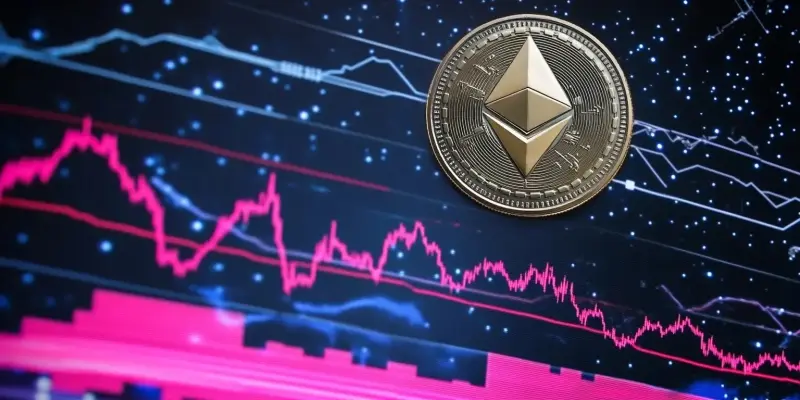In the fiercely competitive world of blockchain technology, Solana and Ethereum continue to captivate the attention of investors and developers alike in their pursuit of market dominance. Both networks have distinguished themselves with unique technical efficiencies, market performance metrics, and ecosystem growth trajectories, making them key players in the evolving landscape. This article delves into the critical aspects of these two giants, offering insights into their investment potential and expected returns for the present year. By evaluating their technicalities, market dynamics, and growth drivers, we aim to provide a comprehensive understanding of where each stands and what investors might anticipate.
Technical Efficiencies and Scalability
The comparison between Solana and Ethereum starts by examining their core technical features, which significantly impact their operational efficiency and attractiveness to users. Solana employs a Proof-of-History (PoH) hybrid consensus algorithm, lauded for enabling the blockchain to handle between 800 and 4,000 transactions per second. This incredible throughput is paired with ultra-low transaction fees averaging a mere $0.00025, making Solana an exceedingly attractive option for high-frequency trading and token offerings. Such efficiency is pivotal, although some concerns about centralization and the network’s historical outages persist in the community’s discourse.
On the other side, Ethereum operates on a Proof-of-Stake (PoS) mechanism, which prioritizes security and decentralization over raw scalability. As a result, Ethereum processes between 15 and 30 transactions per second, with gas fees that can fluctuate dramatically from $0.05 to $10. Recognizing these limitations, Ethereum integrates Layer-2 solutions like Arbitrum and Optimism to enhance speed and reduce costs. Furthermore, the much-anticipated Pectra update this year promises to significantly improve validator efficiency and introduce AI-powered smart contracts, ensuring that Ethereum remains a competitive force in the blockchain space.
Market Performance and Revenue Growth
Focusing on market performance and revenue growth, Solana has demonstrated remarkable progress since hitting a low of $9 in 2022, experiencing a price surge of over 2,000%. This impressive growth trajectory has often outstripped Ethereum’s performance on select trading days post-FTX collapse. A key factor in Solana’s success has been its dominance in the meme coin market, where its low fees and rapid transactions have drawn significant attention from retail traders and NFT developers. Reflecting its financial success, Solana recorded revenues of $124.2 million in January this year, surpassing Ethereum’s $109.1 million for the same period.
Despite a slower growth rate, Ethereum has maintained its position as a leader, particularly in the decentralized finance (DeFi) sector. Ethereum’s price appreciated by 39% in 2024, a growth rate that, while significant, pales in comparison to Solana’s 122%. Revenue for Ethereum saw a reduction from its 2021 peak but still stood strong at $46 million this February. With a total value locked (TVL) in DeFi of $44.5 billion versus Solana’s $5.4 billion, Ethereum remains a pivotal player in the blockchain ecosystem, bolstered by unwavering institutional confidence and a stable market position.
Growth Drivers for 2025
Examining the crucial growth drivers, Solana’s rapid ascent has predominantly been fueled by its commanding presence in the meme coin market. With over 70% of new tokens originating from Solana, attributable to its minimal fees and user-friendly token creation platforms, its appeal among developers and traders is unmistakable. There is also substantial market speculation about the potential approval of a Solana ETF by the SEC, a development poised to attract significant institutional investments akin to the positive market reaction seen with Ethereum’s ETF approvals. Additionally, the Firedancer upgrade launched this year is expected to enhance network stability, further propelling Solana’s attractiveness to investors.
Ethereum, despite the intensifying competition, continues to ride on the wave of strong institutional backing and relentless innovation. The Pectra upgrade, intended to boost validator efficiency and integrate AI-based smart contracts, is set to sustain Ethereum’s leadership in the blockchain sector. Furthermore, Ethereum’s strategic initiative to tokenize real-world assets—such as real estate and financial instruments—positions it advantageously in bridging the gap between traditional finance and blockchain technology, ensuring its continued relevance and adoption in mainstream financial markets.
Price Forecasts and Investment Risks
The predicted price ranges and attendant investment risks for the present year offer a glimpse into potential financial outcomes. For Solana, analysts expect its price to fluctuate between $250 and $400, with some optimists forecasting an ambitious peak of $750. Nonetheless, the blockchain network faces significant risks, particularly related to its dependency on a limited number of validators and the inherently volatile nature of the meme coin market. An unfavorable shift in this sector could precipitate price corrections, underscoring the need for cautious optimism.
Ethereum’s price forecasts, on the other hand, fall within a more conservative range of $4,000 to $4,500, supportable by enduring institutional trust and its status as a relatively stable investment option. However, Ethereum faces challenges primarily in scaling and navigating regulatory scrutiny, particularly concerning its staking and DeFi protocols. These factors are poised to impact its market position, especially as faster and cheaper blockchain alternatives gain traction. Investors must weigh these risks carefully when considering their portfolio diversification.
Balancing Risk and Stability
In the highly competitive realm of blockchain technology, Solana and Ethereum continue to draw significant attention from investors and developers striving for market supremacy. Each network boasts distinct technical strengths, impressive market performance metrics, and notable ecosystem growth paths, establishing them as pivotal figures in the ever-evolving blockchain landscape. This article explores key facets of these leading networks, providing insights into their investment potential and anticipated returns for the current year. By analyzing their technical features, market influences, and growth catalysts, we aim to deliver a thorough understanding of their current standings and what investors might expect for the future. Comparing these giants will help illuminate the nuances of their capabilities and the broader market dynamics at play, equipping stakeholders with the knowledge needed to make informed investment decisions.

